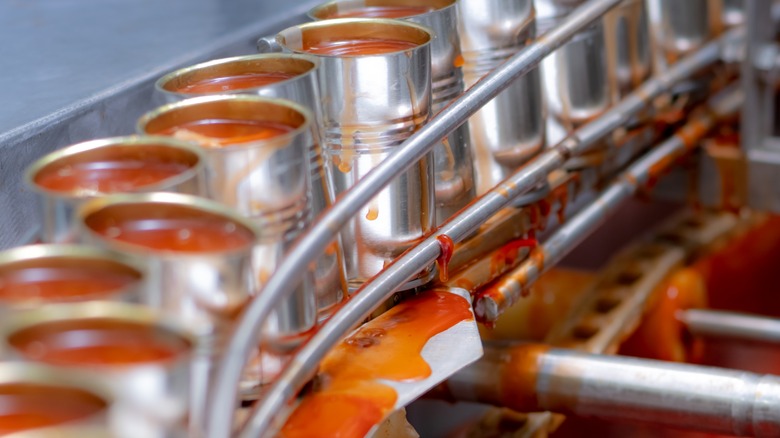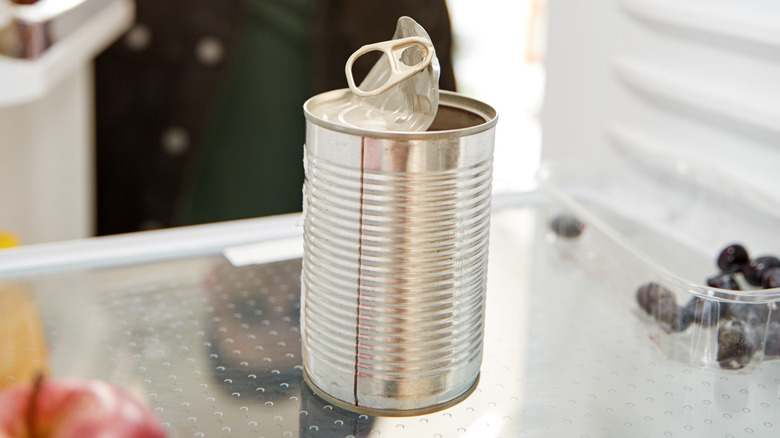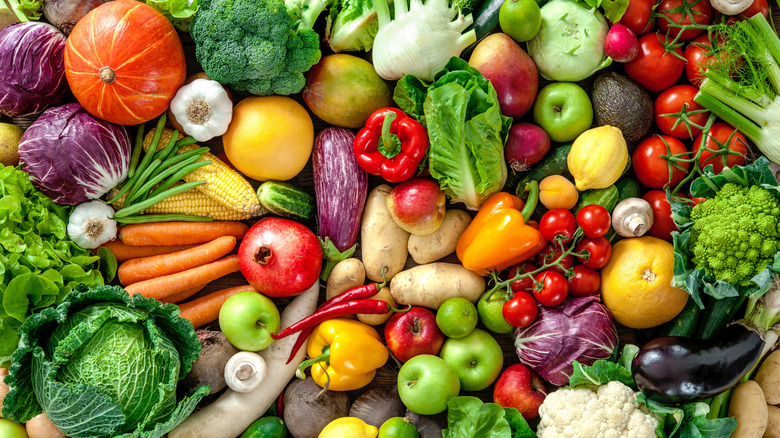How Long Is Opened Canned Food Good For?
You know what they say, "Fresh is best," which may make you think the canned food aisle is one aisle in the grocery store to avoid. Think again! Whether you're stocking up for an apocalypse, headed to a canned food drive, or trying to save a little extra cash, canned foods contain just as much nutrition as the fresh food found in the produce section — and once you pop the top, you must treat it like so.
According to the United States Department of Agriculture (USDA), once canned goods have been opened, their shelf life dwindles quickly — just like it does for fresh food. Depending on how acidic the food in the can is, "can" determine its timeline in the refrigerator. High-acid foods, such as tomato products, juice, fruit, pickles, and sauerkraut, are safe to be consumed within five to seven days of refrigeration, while low-acid foods, such as meat, poultry, fish, gravy, stew, soups, beans, carrots, corn, pasta, peas, potatoes, and spinach are safe for consumption within three to four days.
This said, the way you store opened canned food can affect the taste.
Can you keep the food stored in the opened can?
While the can has worked its magic to help preserve the food contents inside it for all this time, once the seal is broken, air seeps in and highly acidic foods (e.g., fruit, tomatoes) like to cling to the tin, iron and aluminum within the can, also known as metal leaching, per Science Notes. While this won't raise health concerns and the food inside the can is completely safe to eat stil, it will present an "off" tinny flavor and make for less enjoyable leftovers. If you're stuck at the office with a lack of resources, it's best to cover the opened can with plastic wrap instead of the metal lid, which will help to reduce the metallic taste. However, sealable glass or plastic storage containers are preferred.
When cooking at home and racking your brain trying to figure out what to do with those stubborn canned ingredients you only needed a little of, the freezer is your friend. In fact, there are so many freezer hacks out there for leftover canned foods — some of which include Martha Stewart's huge save for tomato paste or POPSUGAR's ice tray hack for pumpkin puree — you should have little trouble finding a storage solution for your own opened canned food, because let's be honest, you probably won't end up using it all up in time (within the USDA's three- to seven-day refrigeration timeline).
Canned food is fresher than you think
Considering its abrupt expiration date once the seal is broken, the contents inside of opened canned goods are surprisingly similar to what's found in that popular produce section. According to Respect Food, a 1997 study revealed that many canned foods kept just as much nutritional value as their fresh and frozen counterparts, with tomatoes showing an increase in vitamin B and E during the canning process.
The nonprofit Oldways highlights the technology behind vacuum-sealed canning, emphasizing a lower water content to fit large amounts of food in a small space. Air is the enemy when it comes to food in opened cans, as bacteria grows rapidly where oxygen is present. Because of the vacuum-sealing innovation, however, we're able to consume foods from cans years after they hit the stores, reducing waste, food costs and feeding more people everyday.
So while you might feel like you're on a time clock once you whip the can opener out, it's refreshing to know that the pineapple from a year-old can is fresh enough to perish as just quickly as one you bought from the farmers market. And just like that fresh food, taking a few measures for proper storage can help to prolong the use of food poured out from an opened can.


